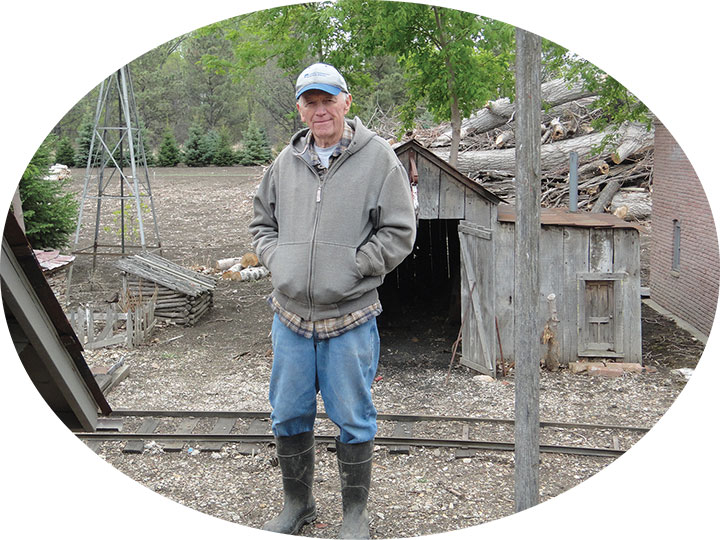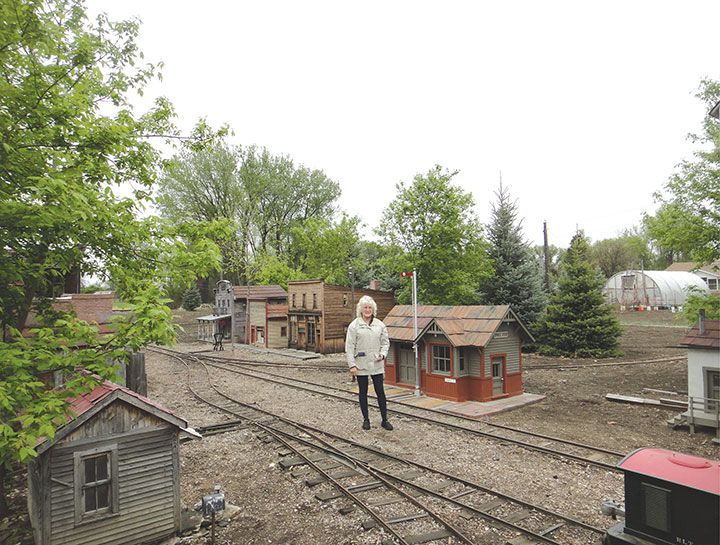It’s not every day that one visits a model railroad and finds it is a functional part of the owner’s livelihood. That, however, is exactly the case with John Beck’s 14-inch gauge Spruce Grove Southern Railroad which winds around and through his produce farm where it is used in tending the fields and collecting the harvest. John is a fan of narrow gauge railroading and his models look the part.

Rolling Stock
The cars of the Spruce Grove Southern are beautiful models. Some of the cars are lettered for other owners, such as Baldwin Southern & Clinker Coal Company. Most large scale ride-on-trains have cars made oversize to accommodate human passengers. Not so on John’s layout; his cars are realistically proportioned and if you want to ride a train, you better find a gondola to sit on.
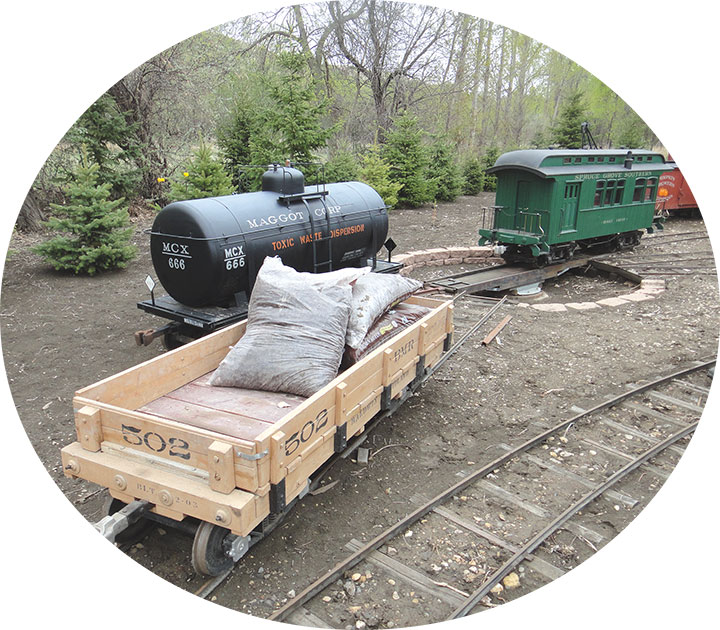
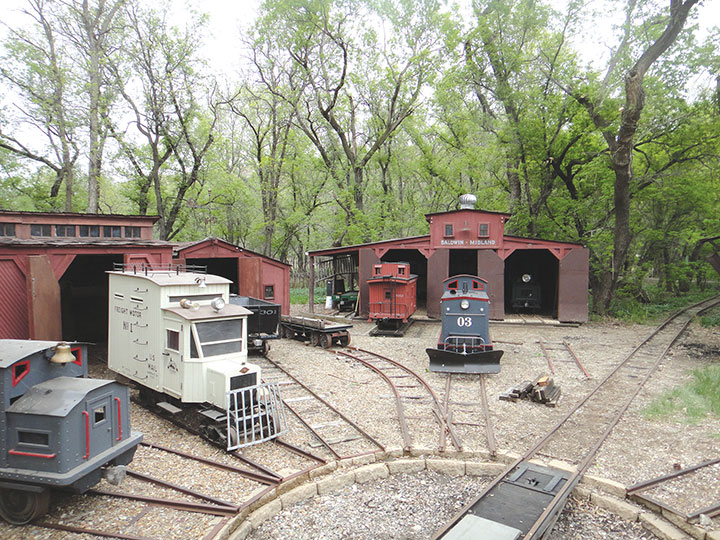
Boxcars and stock cars show a strong Colorado influence. Gondolas are typical low-side cars from almost any prototype railroad. Steel hopper cars are a page right out of the East Broad Top. The combination car is freelanced along the lines of typical prototype practices. It features full interior detail including plush upholstery on the seats and freight packages in the baggage section. It’s a two-compartment car with bulkhead and doorway leading into the rear business car section which features a table with upholstered chairs and a desk complete with papers in the pigeon holes. The caboose, too, is a freelance car with working side doors. It has no interior detail, but accommodates kids instead.
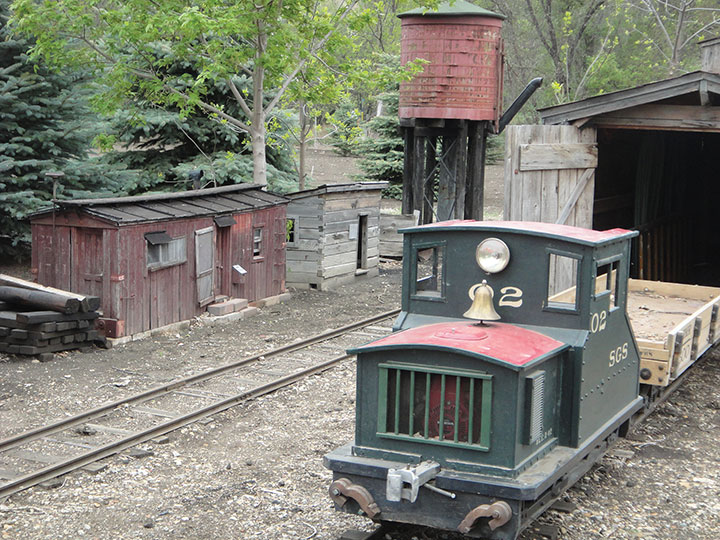
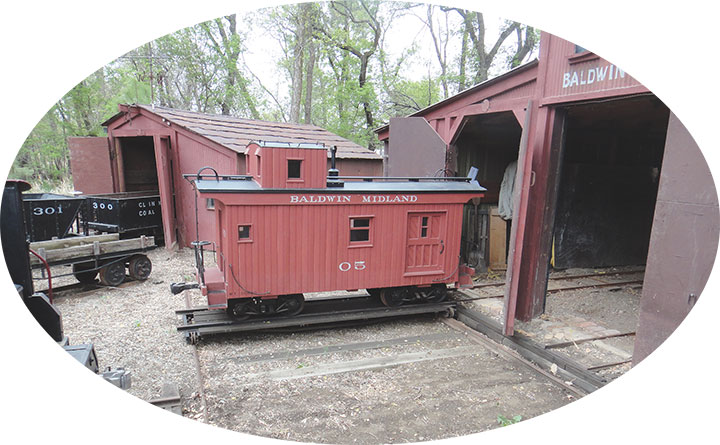
The roster also includes a derrick car and rotary snow plow that actually work. The rotary has a gas engine and a stout blade from an exhaust fan. It throws snow just fine (as long as it’s not too wet).
And then there is the Galloping Goose which is obviously based on Rio Grande Southern No. 2, but is a cute caricature of it. Yes, “cute” — the no-no-word in model railroading; but it really applies here. Ever the innovator, John powers the Goose by foot pedals like a child’s kiddie car. The car’s silent glide along the track elicits puzzled expressions from onlookers.
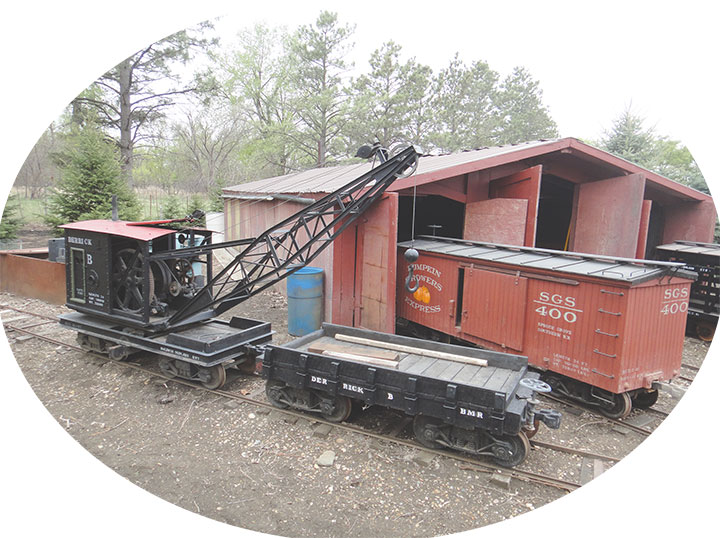
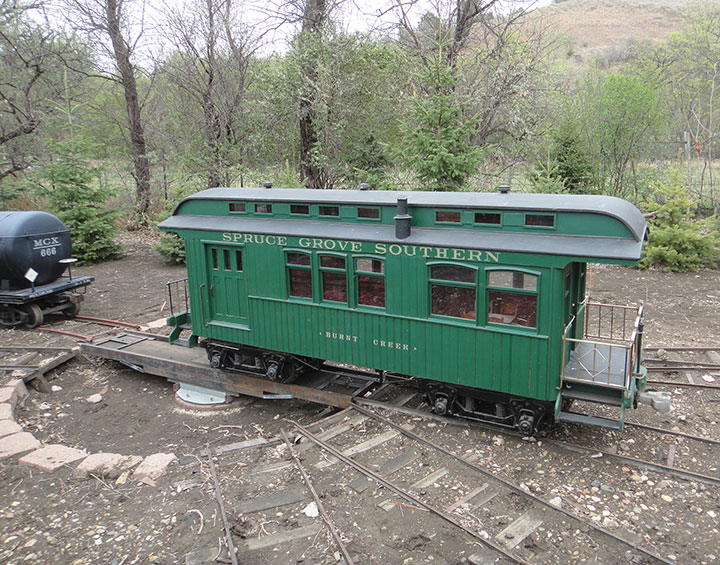
The Spruce Grove Southern has four locomotives with a variety of drives. Two are gas-engine hydraulic drives, one is gas-mechanical, and one is battery-powered electric. One looks like an EMD switcher, the others are free-lanced industrial “critters.”
Physical Plant
The buildings are fine models that are large enough that they stay in place permanently. John milled siding and other structural details.
Some of the structures have interior detail such as the barber shop which features an upholstered chair and miniature shaving mugs. There are 23 structures that include stores, houses, two depots, two engine houses, a roundhouse, a shop building with working transfer table, two water tanks, and a Chama style coaling tower. The railroad is the result of 22 years of John Beck’s solo effort.
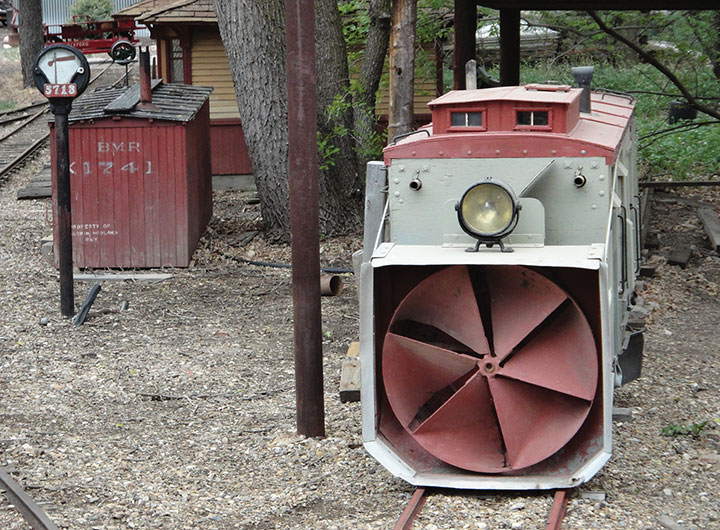
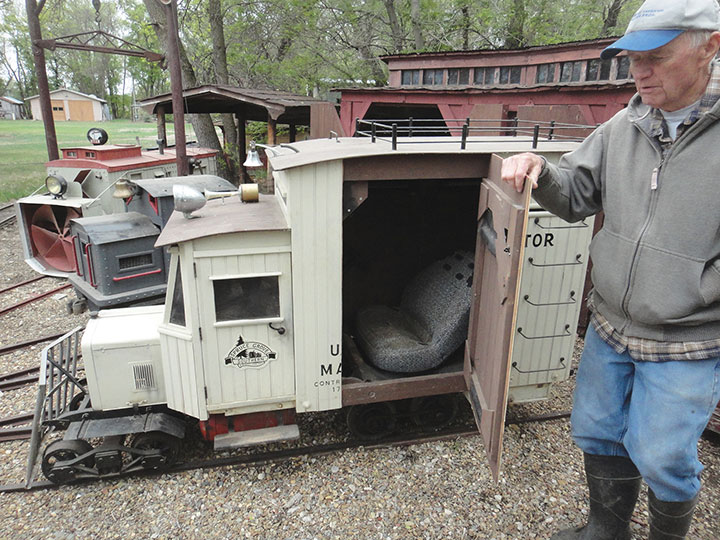
Rail is from a variety of sources. Some is old amusement-park rail. Other rail was made by placing pieces of channel stock back-to-back with a steel strap welded on top. The line has 3,400 feet of track. Turnouts are scratchbuilt stub type.
John made his own patterns and had a foundry cast couplers, wheels, wheel bearing caps, brake wheels, and switch stands.
The answer to the question about scale is, there isn’t one! Individual models were not built to any particular scale, and there is no common scale among them! There are no drawings or plans. I love it, because I’m a “just build it” kind of guy myself who rarely works from plans. John’s models take form as he builds them. When he needs the next part for a model, he builds a part that “looks about right.” The net effect is models that look beautiful!
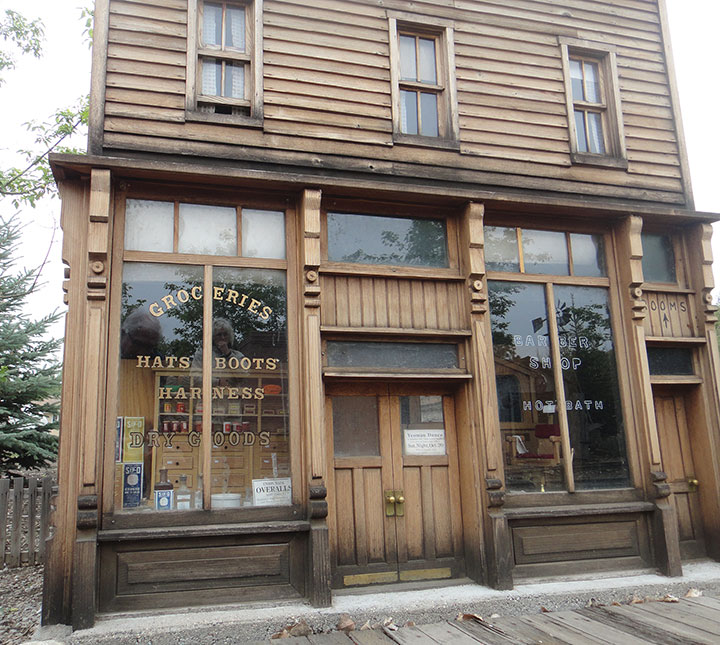
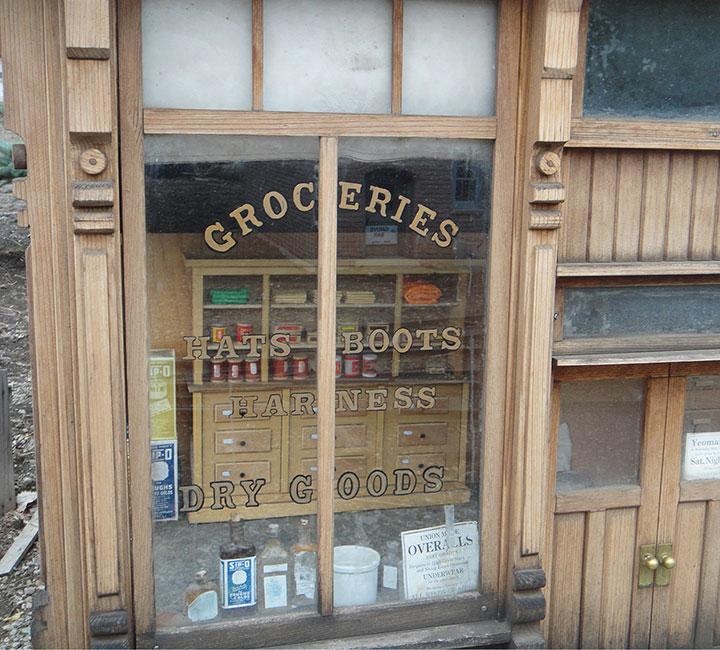
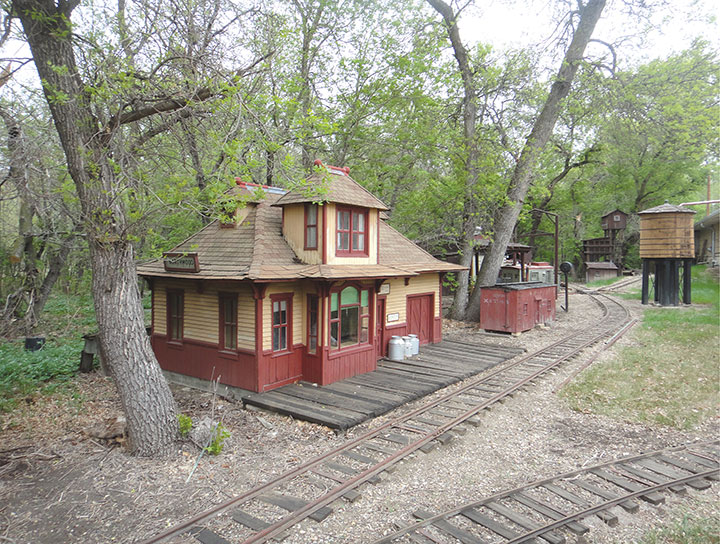

CONCLUSION
John uses his railroad to haul supplies around the sizable sections of his produce gardens. One tank car is used for watering and is filled from the railroad’s water tanks. At harvest time, the gondolas are used to haul vegetables to a roadside market stand. Like most basement layouts, John’s model railroad is a private effort not open to the public.
John Beck’s free-spirited approach to model building has yielded stunning results. His railroad exudes a most charming atmosphere. Its aura makes you feel as if it’s an old familiar place. It is, after all, a real working narrow gauge railroad!
